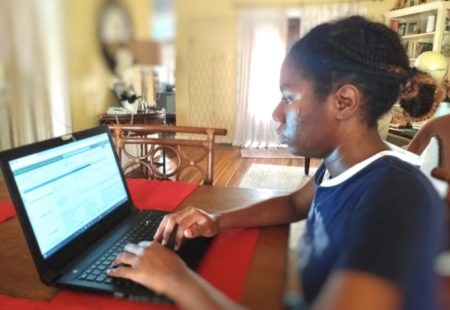What Does Gender Have To Do With Energy?

By Hanan Lachmansingh, Guyana
Energy is vital to our daily lives, powering our homes, businesses, and industries. Since the discovery of fire, energy has been instrumental in facilitating human progress and development. But have you ever considered the connection between gender and energy? This is a topic of interest to me, as this year, I worked as an intern with the Caribbean Centre for Renewable Energy and Energy Efficiency (CCREEE), collecting data on the energy sector in Guyana. This internship opened my eyes to both the challenges and opportunities for achieving gender equity in Guyana’s energy sector. Witnessing how traditional gender roles and norms still shape the design and implementation of energy projects made me curious to explore this further.
In this post, I will delve into how gender affects access to energy and why the participation of women in the energy sector is crucial.
So, did you know that over 1.2 billion people worldwide lack access to reliable and affordable energy sources, leading to energy poverty? Energy poverty affects several aspects of life, including healthcare, education, and economic opportunities. What I also found out during my research, is that the loss of electricity disproportionately affects women and children.
Another important point I noted is that the energy sector in the Caribbean is not exempt from gender disparities and the energy sector remains one of the least gender-diverse sectors in the Caribbean region. The region’s energy sector has been male-dominated, with women being underrepresented in key roles and decision-making positions. These gender differences hinder progress and perpetuate inequality. However, by integrating gender equality into the energy sector, I am confident we can create a more sustainable and equitable future.
Recognising the value of women’s involvement in the energy sector is vital. We women bring unique perspectives, skills, and experiences that can contribute to more effective and sustainable energy solutions. Encouraging and supporting women’s participation in the energy sector can lead to greater innovation, improved decision-making processes and enhanced overall performance.
To achieve that goal in the Caribbean, I will share with you four steps proposed by the Caribbean Development Bank:
- Protect vulnerable households: Many poor households, particularly those headed by women, struggle with high energy costs. Governments should provide targeted financial support and incentives to help vulnerable households cope with high energy costs. Lifeline tariffs and effective customer service can help ensure everyone has access to affordable and reliable energy.
- Collect data and raise awareness: To design effective campaigns and tailor energy solutions, comprehensive data are needed concerning how men and women prioritise households’ energy use. These data can inform public education campaigns that promote energy-efficient practices and consider the different needs and behaviours of men and women.
- Remove financial barriers: Women-led households and businesses often face financial obstacles when investing in energy efficiency and renewable energy. Providing equal access to credit and the development of financial products that cater to the specific needs of women can empower them to invest in renewable energy technologies.
- Promote gender diversity: It is essential to encourage more women to pursue careers in energy-related fields and increase their representation in decision-making roles. Integrating gender considerations into human resource policies within energy institutions can also foster diversity and bring multiple benefits, such as increased productivity and reduced turnover.
By implementing these measures, we can foster an inclusive, diverse, and gender-responsive Caribbean energy sector. However, it is important to recognise that achieving true fairness and equal access to energy also requires addressing additional human dimensions beyond gender. Additionally, I must highlight that to ensure sustainable development and create a better future for all, it is crucial to consider and address other factors contributing to unequal energy access to create an equitable, accessible energy landscape for everyone.



